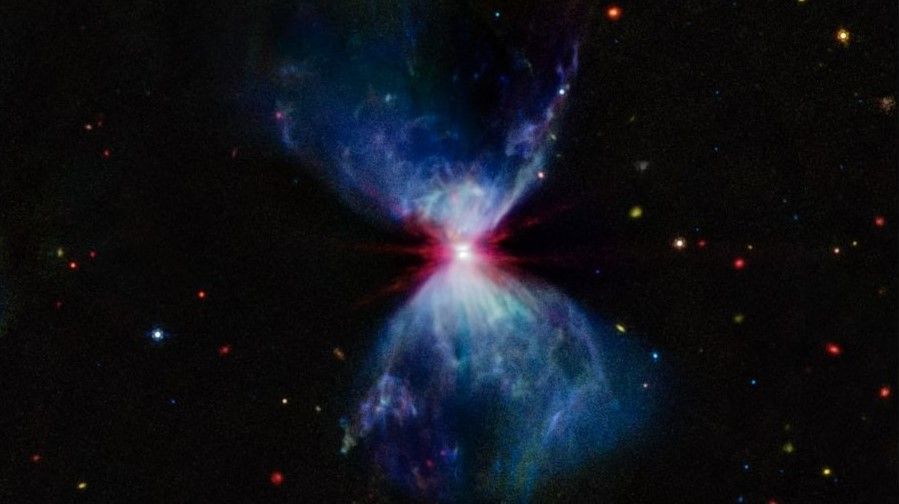To mark Independence Day, NASA has released a James Webb Space Telescope (JWST) image showing the frenzied eruption of a young star in vibrant red, white and blue.
The cosmic pyrotechnics come from the nebula L1527, which is located 460 light-years away in the constellation Taurus.
Similar in shape to an hourglass or a butterfly’s wings, the image shows a 100,000-year-old baby star roaring to life inside a gas cloud. Rotating in place, the star is consuming material around its sides while expelling it in vast jets from either pole.
“This fiery hourglass marks the scene of a very young object in the process of becoming a star,” NASA wrote in a statement. “A central protostar grows in the neck of the hourglass, accumulating material from a thin protoplanetary disk, seen edge-on as a dark line.”
Related: James Webb Space Telescope captures star going supernova in a dazzling cloud of dust
Stars can take tens of millions of years to form — growing from billowing clouds of turbulent dust and gas to gently glowing protostars, before developing into gigantic orbs of fusion-powered plasma.
As stars sputter into life, they fling out material in the form of winds and jets of ionized plasma in a process known as stellar feedback.
The gas surrounding the infant star is usually dark, but the star’s outflows produce shockwaves in the gas that cause it to glow. The blue-colored region shows carbon-based molecules called polycyclic aromatic hydrocarbons.
To capture the image, NASA used the James Webb Space Telescope’s powerful Mid-Infrared Instrument (MIRI).
The JWST also imaged the protostar in the near-infrared spectrum, its outflows appearing in the orangey hues of a spectacular cosmic sunset.

Dr. Thomas Hughes is a UK-based scientist and science communicator who makes complex topics accessible to readers. His articles explore breakthroughs in various scientific disciplines, from space exploration to cutting-edge research.








